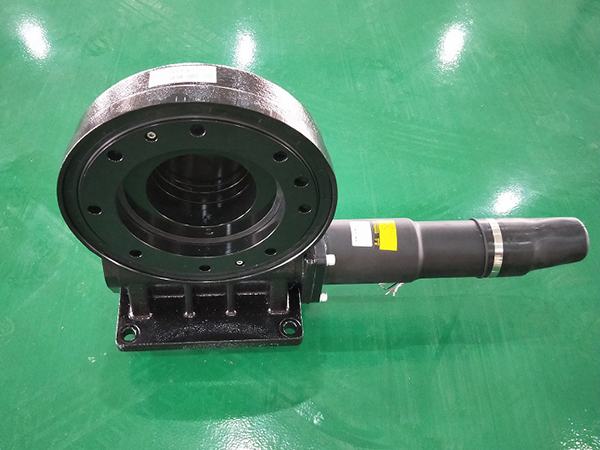What are the self-locking methods of spur gear drive?
Spur gear drive is also a kind of gear type slewing drive. Its transmission principle is a device in which the pinion drives the gear ring of the slewing ring to rotate and reduce. From the deceleration principle of the slewing drive, we can find that it does not have the self-locking function. Yes, if you want to achieve exact stop, you need to use a brake device for locking. The editor of Ronda will introduce to you the self-locking methods of spur gear drive.
What is spur gear drive self-locking
Spur gear drive self-locking is to manually stop the drive when it needs to be stopped. The main use of the self-locking principle is that when the transmission angle, that is, the complementary angle of the pressure angle, is less than one-half of the friction angle, the conditions for self-locking can be achieved. That is to follow the self-locking phenomenon, when the resultant force of the transmission force of the object acts within the friction angle, no matter how great the force is, there will always be a total reaction force to balance it and keep the object still. However, the spur gear drive cannot achieve self-locking and needs to rely on external force to complete the drive locking effect. The following specifically introduces the ways to realize the self-locking of the spur gear drive.
Self-locking method of spur gear drive

1. Servo motor self-locking
When the spur gear slewing drive is driven by a servo motor, when the driving force is small inertia, that is, the starting is frequent and the load is small, the servo motor is usually stopped to achieve the locking of the spur gear drive. The locking force of the servo motor is passed The reduction ratio of the spur gear drive is amplified, and then reflected on the turntable to achieve drive locking. At this time, the locking force is relatively large, which is very suitable for working conditions with small inertia.
2. Self-locking hydraulic motor
The spur gear drive using hydraulic motor can be braked by the hydraulic motor during use, so as to realize the locking of the spur gear drive. Among them, the hydraulic motor braking method is divided into the following three types:
(1) Braking with overflow valve: It can realize bidirectional braking to the hydraulic motor, and can play a buffering effect.
(2) Braking with accumulator: Install accumulators near the oil inlet and outlet of the hydraulic motor to achieve bidirectional braking on the hydraulic motor.
(3) Braking with normally closed brake: When the hydraulic oil in the brake hydraulic cylinder loses pressure, the brake will act immediately to achieve braking.

3. Self-locking brake reducer
The disc brake that uses the spur gear of the brake reducer to drive the brake motor is installed on the end cover of the motor’s non-output end. When the brake motor is connected to the power supply, the electromagnet attracts the armature and the brake armature is separated from the brake disc and the motor starts When the brake motor loses current, the electromagnet cannot attract the armature, the armature falls back to the brake disc, and the motor stops rotating. The self-locking effect of the spur gear drive is realized through the characteristics of the brake motor’s power-off braking.
4. Bolt brake
What are the self-locking methods of spur gear drive? You can also install a pin hole on the gear drive to lock the spur gear drive that requires a fixed position. At the beginning of the design, a pin hole is designed on the rotating ferrule, and a starter or hydraulic pin device is designed on the frame. During the driving process, the bolt mechanism can pull out the pin to allow the drive to rotate normally. Insert the pin back into the bolt hole at the position where it needs to be stopped and fixed. The drive is fixed on the frame by the pin of the ferrule and cannot rotate. Realize self-locking.
5. Self-locking brake gear
A separate brake gear is installed on the rotary drive. This method is suitable for situations where frequent braking is required and the spur gear drive power is large and the braking power is large. Large braking force will cause the failure of the connection between gears, reduction gears, and motors, and shorten the service life of the spur gear drive. For this reason, the spur gear drive with independent brake gears can be used to achieve separate braking to avoid the transmission force. The connecting parts fail due to the sudden braking, and the parts are damaged.
The above is the main introduction about the self-locking methods of the spur gear drive. The realization of the self-locking function of the slewing drive can be selected according to the specific equipment operating conditions and requirements.

